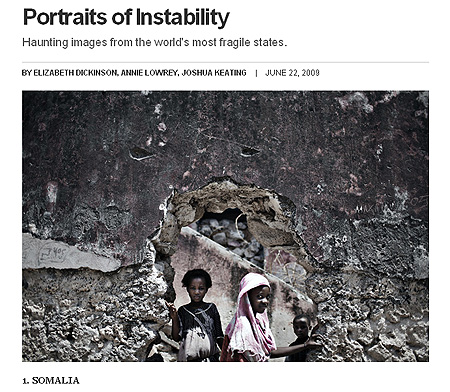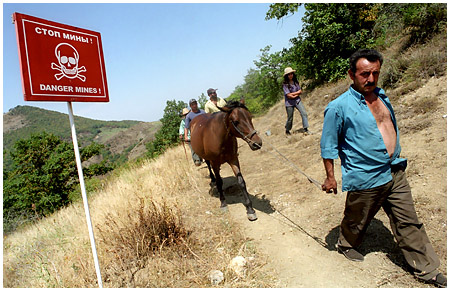
In an insightful photo essay titled ‘Life in a Failed State’, Foreign Policy provides us with a sobering view on what life looks like in some of the most desolate countries in the world.
Haunting images serve as visual reminders of the failure of national governments and the international community to address the conflicts and history of instability and underdevelopment that underlies their fragility.
The 20 top countries on the 2009 Failed States Index are featured, among them: Somalia, Iraq, Pakistan, North Korea, Ethiopia, Yemen and Sudan.
Further, for a rare glimpse into life in North Korea, check out a haunting slideshow by Tomas van Houtryve for Foreign Policy.


